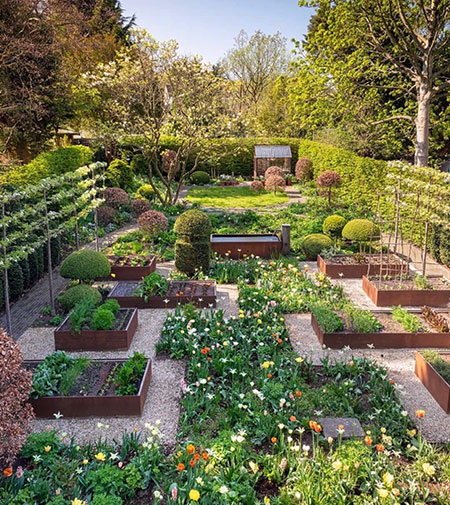Setting up a Raised Bed Garden
Published: May 29, 2020
Why a Raised Bed?
Do you live in an area with less than ideal soil? Raised beds give you control over the soil in which you are growing your plants. The quality of the soil you start out with is one biggest differences in the outcome of your crops. Raised beds can put the plants at eye level or at a level that is less strenuous on your back. Having your crops at a higher elevation allows for better observation of pests issues and easier access to the crops. Raised garden beds look a lot nicer and provide a cleaner more aesthetic look to the exterior of your house.
Planning your Garden

Raised Bed Kits come in a myriad of shapes and sizes to best suit your space. You'll want to pick a spot that receives full sun for most of the day or at least 6 hours. When choosing a spot, find one that is relatively level as you will want the top of your bed to be as level as possible. Also take into consideration the proximity of the raised beds to your home and water source. Is there a spigot close by that will not require you to completely unroll a hose every day? Distance from your home can also be a huge factor in whether or not you're going to inspect and tend to the crops after a long day at work. Spending time each day is a great way to catch and diseases or pests early and prevent them from destroying your crops.
Other things to consider are potential predators, do you live in an area with lots of little animals that will nibble on your vegetables? Keeping the garden closer to your home may discourage certain animals from cashing in on a free all you can eat buffet, while not 100% full proof there are also some annuals such as marigolds that you can sprinkle in and around your garden that will fend off animals such as deer and rabbits. You will also want to consider the environmental conditions of the area. Is there a lot of run off when it rains? Does water tend to pool in the area? You don't want to drown your plants over time so if there is a lot of runoff coming into your garden you may want to build a French drain to divert the excess water around.
Prepare the Area
Unless you are truly fortunate to have a bare level patch of land already available for a raised bed, then you will need to do some work to prepare. If there is currently grass in the area you should either remove it or if you're willing to wait smother it with compost. If you have weeds in the area you will want to make sure these are removed as best as possible, either digging them out by hand or other longer processes such as solarization. If there are shrubs in the area you can just remove these and grind the stumps does if necessary, overtime the roots will break down and add nutrients into the soil.
Fill Your Bed
Once the area is prepared and the bed is placed fill the bed with a good quality soil to give your garden a good jump start with plenty of nutrients. Keep in mind the soil will pack down a little over the next month so don't be afraid to fill the bed to the brim or close to it. After the bed is filled and your ready to plant, you can sow your seeds or plant any already established plants.
Interested in setting up your own raised garden bed, check our our line of raised garden bed kits.
Build your new Custom and get a Free Instant Quote Today
Our state of the art designers allow you to design and build completely customized to fit your exact needs.
Questions or concerns contact us here or via 412.641.0177 .
Build an Instant QuoteNeed Help?
Contact Us @ 412.641.0177
Recently Published
Interior Cabinet Door Styles That Elevate Your Kitchen Or Bathroom
Published: November 12, 2025
Why Mortise
Published: October 23, 2025
From Shaker To Raised Panel: Cabinet Door Styles That Transform Your Home
Published: October 08, 2025
How To Match Door
Published: September 30, 2025
Choosing The Right Exterior Shutters: Louvered, Board
Published: September 25, 2025
The Warmth Of Wood: Barn Doors Tailored To Your Home
Published: September 09, 2025
Classic Style, Modern Strength: Custom Wooden French Doors
Published: September 03, 2025
Built By Hand, Designed To Last: Custom Wood Louvered Doors
Published: July 07, 2025
Flat Panel Shutters For Colonial, Craftsman, And Farmhouse Styles
Published: May 28, 2025
Bring Old-World Charm Home With Custom Wooden Louvered Shutters
Published: May 04, 2025

